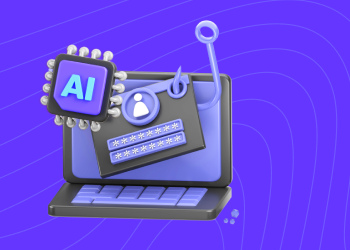Many companies, including MSPs, are now experimenting with solutions with built-in artificial intelligence (AI) functionalities in order to better address cybersecurity challenges. In fact, in 2024, business spending on generative AI spiked to $13.8 billion, showing that enterprises are heavily investing in practical use cases for AI.
AI has many advantages, including productivity and efficiency boosts, predictive analytics capabilities and chatbot functionalities. In the cybersecurity industry, the technology’s benefits can be applied to threat detection, automated response and vulnerability management programs.
Below are various ways that managed service providers can best leverage AI in the MSP business to help their customers tackle evolving cybersecurity-specific challenges in 2025.
Table of Contents
Using AI to Detect and Eliminate Threats
Security teams can leverage AI in many ways to sniff out anomalies within organizations, weed out threats and identify broad risks. The machine learning algorithms underpinning AI can help businesses develop a clear picture of user behaviors across their environments, giving a more accurate analysis of what’s normal versus what’s not normal.
Here are a few specific ways AI can eliminate threats:
1. AI Monitors Abnormal Data Access Behavior.
AI technologies can help security teams detect if threat actors are trying to access sensitive data. They can also help detect phishing emails, by analyzing email messages to find red flags like suspicious attachments, misspelled domain names and email spoofing. When threats are detected, organizations can also rely on AI tools for automated response processes.
2. AI-based Analytics Tools Give a Better Understanding of Evolving Threats.
Security teams that rely on indicators of compromise (IoCs) or attack signatures can also leverage AI tools to incorporate behavioral analytics into their detection processes. This will help them better understand the threats impacting their specific environments.
3. AI Can Help Improve Red Team Simulations and Penetration Testing Projects.
AI-based solutions can help automate penetration testing processes, streamline tasks and analyze custom threats within organizations to help give a comprehensive evaluation of the specific risks they pose to businesses.
Leveraging AI to Detect Security Weaknesses
Vulnerability management is one area where AI tools can help security teams get an upper hand over threat actors. Businesses currently struggle with all aspects of vulnerability management. For instance, huge numbers of flaws are being continually discovered across many products in businesses’ environments, but companies may not even know if they have the products impacted by the flaws. At the same time, threat actors are getting better at targeting flaws: The average time for threat actors to exploit zero-day vulnerabilities was five days in 2023.
AI tools can help organizations with vulnerability management in several ways, including:
- Creating an inventory of products: AI can help organizations gather data and convert it into actions.
- Mapping out where vulnerabilities exist within their workplaces: AI tools have the capabilities to automatically identify potential flaws.
- Collect the data needed to prioritize vulnerabilities for patching: If there is evidence of a vulnerability being exploited, AI can help businesses determine that the bug should be immediately patched.
AI technologies can provide the tools to better understand current threats within an environment, but they can also help security professionals analyze datasets from past incidents in order to scope out potential future attack scenarios. This use case can help organizations gain a better understanding of how they can proactively defend against threats.
AI: Looking Ahead
Let’s reiterate and summarize what MSPs should know and how they should act with AI in the following year.
-
AI’s capabilities, including behavioral and predictive analytics and automated response times, can help organizations reduce their response times and mitigate human error in their approaches to threats and risks.
-
Managed Service Providers should come to the table with an in-depth understanding of how this technology can improve existing processes and help keep security teams ahead of threat actors.
-
Security teams can leverage AI in many ways to sniff out anomalies within organizations, weed out threats and identify broad risks.
-
AI technologies can provide the tools to better understand current threats within an environment, but they can also help security professionals analyze datasets from past incidents in order to scope out potential future attack scenarios.
-
AI-based solutions can help automate penetration testing processes, streamline tasks and analyze custom threats within organizations to help give a comprehensive evaluation of the specific risks they pose to businesses.
Further reading How Deep Learning Is Changing the Cybersecurity Space





